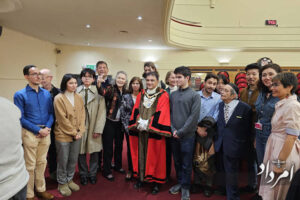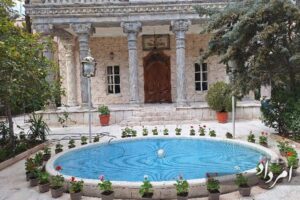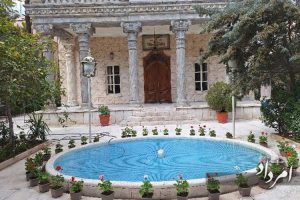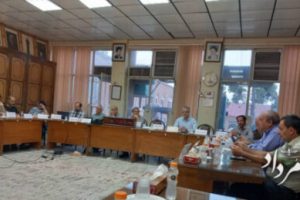The head of the archeology excavation group in Owlton announced the destruction of 80% to 100% of some graves from the Parthian and Islamic periods with backhoe, and the speculation of graves from the Iron Age.
According to Ilna’s correspondent, construction operations have again entered the ancient site in a part of the country and destroyed a part of the site. As a result of the road construction and four-lane operation of the Parsabad-Moghan-Sarband communication axis in the area of Owltan village, in addition to the discovery of ancient graves, due to destruction of some of these graves, an emergency permit for exploration of the graves in Owlton Qalasi, Parsabad and Ardabil was issued by the Cultural Heritage Research Institute.
Owlton Qalasi is located on the route of the historical road “Caucasus Yuli” and “Il Yuli” and is considered one of the important historical cities of the Moghan Plain. This historical site has a central citadel covering an area of 25 hectares, an artisans’ section with an area of twenty-five hectares, and Sharestan, Rabz, and the excavated cemetery altogether being more than 100 hectares.
Ruhollah Mohammadi, head of the archeology team for the exploration of Owlton, told Ilna: 10 graves have been identified so far, most of them from the Parthian, early Islamic, and Seljuk periods. Two graves belonged to the Islamic period when Islamic burials were also carried out without burying objects next to the body. These burials were done in holes facing the Qibla, just like today’s graves. The only difference between these Islamic era graves and today’s graves is that these graves are at the same level as the ground and do not have a marker stone.
He continued: Among the graves of the early Islamic and Seljuk periods, signs of the burial of different people of different ages were found. Men, women, and even teenagers can be seen among these graves. The burial methods of the early Islamic period and the Seljuk period are not much different from each other and are pits facing the Qiblah.
According to Mohammadi, the graves of the Parthian period show burials in fetal and arched shapes. The fetal way of burial were done facing the east and the west. But the open vault burial is different in that the upper torso is laid on the back, and the legs are bent inward. The left hand is placed towards the mouth, and the other hand is placed on the stomach. These burials show the rituals of their period. Considering that the Parthian period lasted more than 500 years and different traditions emerged in different periods, we can talk about the newly found graves after further investigation. These burials may have been done in different Parthian periods and include different periods. Talking about this needs more study and research.
The head of the archeological delegation also explained about the objects found in the graves of the Parthian period: in a grave that is believed to be the burial of a man, a sword with an iron scabbard were found, while the sheaths found so far were bronze and this is considered a notable example, Iron arrowheads, swords, sword scabbards, iron, bronze and clay objects, clay beads, agate, ferrite, etc. are among the other things found in these graves. Besides women’s graves, clay beads were also found in men’s graves. But agate and ferrite are unique for women and were used in their ornaments. Bronze buttons have also been found in women’s graves. Examining these works also requires more research to conclude the social position of burials. There may be something under the skeletons in some graves, and since the excavation has not yet been completed, we cannot speak about this.
Mohammadi reminded: following the activity of heavy road construction machinery, many of the graves we have obtained so far have been destroyed. As it can be said, almost 80% of the tombs of the Islamic period were demolished in such a way that a part of the leg of the deceased and other burials was destroyed, or a part of the skull remained, and the chest was damaged. Backhoes have removed soil by advancing more than 1.5m into the ground, while their activity license allowed digging only upto 70cm depth. This has caused widespread destruction in this part of the cemetery. Even some graves have been wholly destroyed. Some of the Parthian graves have also been 100% eliminated.
Regarding the reason for the road construction project entering the ancient site and whether they had activity permit or not, the head of the archeology group added: the road construction and quadrangle operation has taken place on the Parsabad-Maghan-Sarband communication axis in the area of Owlton village. Because this road existed long ago, they could not go towards the villages and the houses to expand, so they came towards the ancient site. Although they are about 300m away from the moat, we knew they would operate in the safe zone. The province’s cultural heritage opposed this project in 2018, but in the end, it was done due to political pressure. Finally, they were supposed to excavate to a depth of 70 cm, but they did not comply with this requirement in some places. For nearly 50 m they dug into a depth of 1.5m and destroyed graves in this area. Some graves have signs, and some have been destroyed. We can say that only two graves are intact and 8 graves are damaged.
He announced the discovery of a new grave and said: By exploring the lower layers, we managed to find a grave whose evidence shows that it may belong to the Iron Age. We are not sure yet, and it needs further investigation. Considering that Owlton is a historical city, we may have found only one of the cemeteries of this city. Considering the size of the area, which is about one hundred hectares, this cemetery is probably one of the cemeteries of this historic city, which is located in the southern part of the area. About a month ago, geophysical studies were also conducted in the area under review.
According to Mohammadi, the initial estimate is that more than 30 graves in this area need to be identified and explored.










